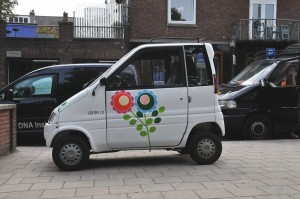Cycling is second nature to the Dutch. Just about everyone here cycles from birth until your arthritis gets too bad at the age of 90.
The infrastructure for cycling is also superb, with cycle lanes everywhere, but long distance can be a bit of a problem. What do you do if you need to go to another town? Transporting bikes can often be a bit of a hassle.
This is where a rather good innovation rears its head – the folding bicycle. The folding bike can literally fold up, so that it takes less space than a normal bike, making it very portable.
The added benefit of this – and why they are so popular – is that, while you need to pay to take a normal bike onto Dutch trains, folding bikes are allowed on for free, so they are very popular amongst Dutch commuters.
They might look rather silly with there ludicrously small wheels, making anyone who rides them look like they just stole a bike from a clown at the local circus, but they are incredibly practical
